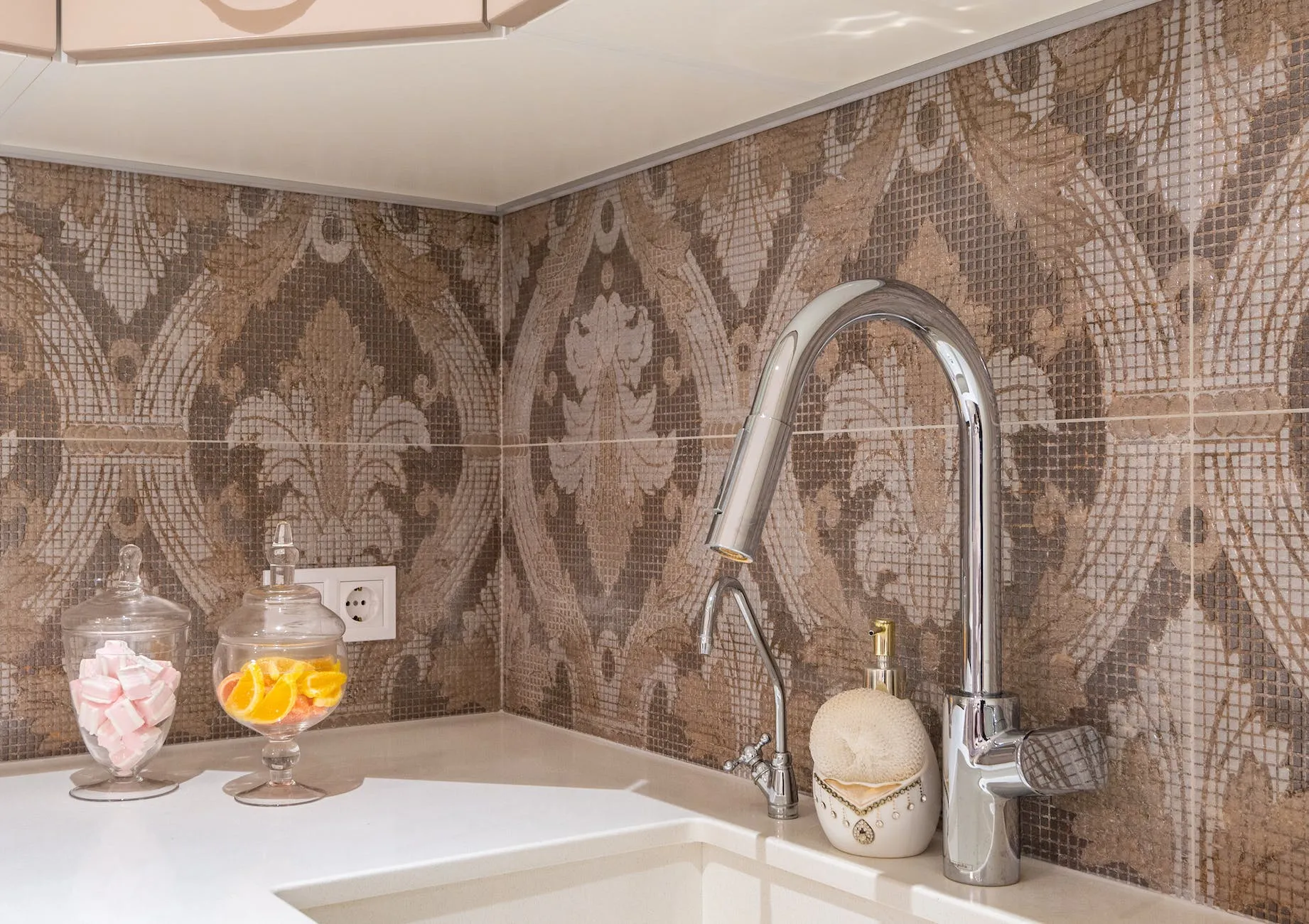A Kitchen Faucet is one of the most commonly replaced items in a home. After all, they’re used daily, and they go through a lot of wear and tear. But how long do kitchen faucets last? And what can you do to extend its life?
In this post, we will answer these questions and more. We will discuss the types of faucets on the market and what makes them different. We will also cover how to take care of your faucet and keep it working like new for years to come.
How Long Do Kitchen Faucets Last?
Kitchen faucets can last anywhere from a few months to a year, but the average lifespan is around 6-12 months. Factors that affect how long a kitchen faucet will last include how often the faucet is used and how often it is cleaned.

Different Types of Kitchen Faucets and Their Lifespans
There are different types of kitchen faucets, each with its own lifespan. Some faucets can last up to 10 years, while others may only last for a couple of years. It depends on the faucet type and how often it is used. If your faucet is rarely used, it may last longer than if it’s being used more frequently. Here are some of the most common types of kitchen faucets and their lifespan:
- The sprayer type: These typically have a shorter lifespan due to the fact that they are harder to keep clean. They also tend to be less durable than other types of kitchen faucets.
- The lever type: These typically have a longer lifespan because they are easier to keep clean, and there is less chance of them getting clogged up with food particles or bacteria. However, they can be more susceptible to breaking if dropped or knocked off the countertop.
- The swivel type: These typically have a longer lifespan because they aren’t as likely to break and are easier to adjust to get the perfect stream of water.
What Affects a Faucet’s Lifespan?
Water heaters and faucets are installed in kitchens and bathrooms to provide a dependable hot water supply. However, these fixtures can wear out prematurely because they are exposed to the elements.
Here are some factors that can affect a faucet’s lifespan:
- The type of construction – A metal faucet will last longer than a porcelain one, for example.
- Location – Faucets located in direct sunlight or cold temperatures will wear out faster than those in warm areas.
- Usage – Overuse of the faucet, such as running it continuously while washing dishes, can cause it to become leaky.
- Maintenance – Regularly cleaning the faucet with a soft cloth will help remove built-up water residue and keep it functioning properly.
Common Causes of Kitchen Faucet Failure
There are a few common causes of kitchen faucet failure. These can include rust and corrosion from water, grease, and acids; worn or broken parts; clogs from food debris and sediment buildup; and bad installation.
Generally, a kitchen faucet will last anywhere from 3 to 7 years, depending on how often it is used and taken care of. If you notice any of the following signs of trouble with your faucet, be sure to take it in for repair: dripping or excessive noise; leaks; poor water pressure; discoloration, or scaling on the metal parts.
How Long Do Different Types of Kitchen Faucets Last?
Several factors can affect the lifespan of a kitchen faucet, including the type of water source, how often it is used, and how it is maintained. For most faucets, metal parts and plastic components will last between 2 and 5 years, while rubber parts will last around one year.

What to Do When Your Faucet Has Reached the End of Its Life?
If you’ve reached the end of your kitchen faucet’s life, there are a few things you can do to replace it. First, make sure that it’s not simply worn out. Second, be sure to keep an eye on the condition of your hose – if it’s showing signs of wear and tear, it may be time for a replacement too. And finally, if replacing your faucet is not an option for budgetary or space reasons, consider investing in a quality adapter that will allow you to use your existing hose.
How to Maintain Your Kitchen Faucet for Longer Life?
Keeping your kitchen faucet clean and free from mineral build-up can help it last longer. Cleaning the spray head with a soft cloth and a mild soap solution once a month is sufficient.
If mineral buildup accumulates, you may need to take the faucet apart and clean all of the parts. Use a hose attachment to blast away the dirt for particularly dirty areas.
Once a year, thoroughly clean the entire faucet using warm soapy water and a soft cloth. Keep in mind that if you have hard water, your faucet will require more frequent cleaning.
How Long Do Bathroom Faucets Last?
When it comes to kitchen faucets, most homeowners expect them to last around ten years. However, depending on how often the faucet is used and how well it’s taken care of, some may last up to 20 years or more. While this isn’t overly long by any means, it’s still worth considering when considering upgrading your fixtures.
When it comes to bathroom fixtures, most homeowners expect them to last around 3-5 years. However, depending on how often the faucet is used and how well it’s taken care of, some may last up to 7 years or more. While this isn’t overly long, it’s still worth considering when considering upgrading your fixtures.
How Long Do Faucet Cartridges Last?
How long should you expect your kitchen faucet to last? One of the most common questions homeowners ask is how long their faucet cartridge will last. Here’s a breakdown of how often each type of cartridge will need to be replaced and what factors can affect that.
- Piston Cartridges: These are typically replaced every 6-8 years. Older homes may have them replaced more frequently as they become harder to turn and wear down faster. Factors that can affect the lifespan of a piston cartridge include water usage, filtration quality, and if the faucet has been properly maintained.
- Cartridge Filters: Filter cartridges typically last around 2-4 years with normal use, depending on the filter material and frequency of replacement. Changes in water quality, hard water conditions, and improper installation can all cause the filter to start becoming ineffective over time. It might be time for a new cartridge filter if you notice excessive brownish or yellowing in your water.
- Faucet Hoses/Piping: Faucet hoses/piping can also wear down over time, especially if they’re subjected to high temperatures or mineral deposits from hard water. This can cause kinks or leaks in the system, which will require professional repair or replacement.
How To Replace Kitchen Faucet?
Replacing your kitchen faucet is a relatively easy task that anyone can do with little know-how. Follow these steps to replace your kitchen faucet:
- Remove the old faucet. If the counter is wet, it may be difficult to remove the old faucet. Use a pry bar or a screwdriver to loosen the screws if necessary.
- Remove the old stem and washer. This will give you access to the cartridge and the faucet’s stem.
- Screw in a new cartridge and stem. Mix the threads on both pieces and screw them together using a Phillips head screwdriver.
- Replace the washer and tighten down the screws. Test your new faucet by turning it on (if applicable).
Conclusion
If you are like most homeowners, you probably don’t give much thought to the length of time your kitchen faucet will last. After all, it’s just a faucet – right? Wrong! A properly functioning kitchen faucet is integral to keeping your home clean and looking neat. In fact, many homeowners report that their kitchen faucets have lasted for up to 10 years or more with regular use. That being said, some basic factors can affect the lifespan of a kitchen faucet, and we outlined them below to help you make an informed decision about when it is time for a new one:
Frequently Asked Questions:
How do you know when you need a new kitchen faucet?
So how do you know when you need to replace your old kitchen faucet? Here are five signs that you should upgrade: 1. You’ve been dealing with water spots or drips on the countertop. 2. Your sink is constantly clogged up with gunk and debris. 3. You’ve had to replace your plumbing more than once in the past few years. 4. You notice an increase in noise when using the faucet or when trying to turn it off/on. 5. The lever seems difficult or impossible to move
What is the average cost to replace a kitchen faucet?
Replacing a kitchen faucet is something that many homeowners may need to do at some point. There are a few factors to consider when estimating the cost of replacing a kitchen faucet, including the type of faucet, its age, and the complexity of the installation. Depending on the model, most faucets cost around, on average, between $150 and $400. However, there are also more expensive options that feature high-quality materials and features which may cost up to even $4,000. If you go for cheaper options and DIY installation, it may only cost $50.
What faucets last the longest?
There’s no one answer to this question, as it depends on various factors, including the type of faucet, how often it is used, and the environment it’s in. That said, some kitchen faucets last longer than others. For example, brass kitchen faucets typically last longer than plastic or metal ones. They’re also more durable and can handle more wear and tear. On the other hand, ceramic and glass kitchen faucets are more likely to break or become scratched over time. If you’re unsure about which one to buy, speak to a professional about your options.
What should I look for when replacing a kitchen faucet?
If you’re considering replacing your kitchen faucet, there are a few things to remember. First, consider the type of faucet you are looking for. You also need to consider the style of your kitchen: modern or traditional. Once you know what kind of faucet you need and the style of your kitchen, look for a model that will match. Your next consideration is the size of the pot and handle. Finally, ensure your old faucet is compatible with the new one. Most kitchens have a standard faucet size, so make sure your replacement fits before buying.
